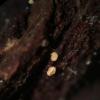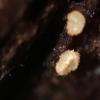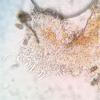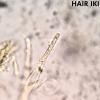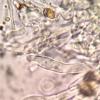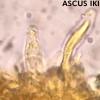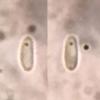
11-07-2023 20:35
Ethan CrensonHi all, I found these white - orange hairy discom

10-07-2023 00:17
Przemyslaw DrzewieckiHello, 13.06.2020. Piotrkówko near Bydgoszcz, Pol

06-07-2023 22:25
Karen PoulsenOn last year's stem close to the ground in garden

09-07-2023 20:02
Recolectada la pasada semana en bosque de hayas�

08-07-2023 23:47
Hola. A anamorfo del pasado 21 de mayo, sobre un t

28-09-2014 16:00
Bonjour à tous, Je vous propose un Coniochaeta v

11-09-2013 11:33
 Björn Wergen
Björn Wergen
Hi there,Since a few weeks I am trying to identify

05-07-2023 10:26
 Ciara Luna Gomez Escoin
Ciara Luna Gomez Escoin
Hello again,I deleted the topic because the gazani

03-07-2023 06:47
Juuso ÄikäsThese little apos were growing on a decaying petio
Eupezizella aureliella ?
Ethan Crenson,
11-07-2023 20:35
Hi all,
I found these white - orange hairy discomycetes in New York City recently. I thought that they might be Eupezizella aureliella.
Apothecia are very small, less than 0.5mm wide, in most cases. They are clothed in bright white hairs. Some of the hairs are tinged bright orange. In a water mount the orange pigment appears to be an oily or resinous exudate. The hairs are narrow above and wider at the base, textured and approximately 35 x 4µm.
Asci are very faintly amyloid (unless that's just a refractive ring I'm seeing). Spores hyaline somewhat fusiform, almost cylindrical, 5-5.5 x 2µm.
On the bark of an unknown tree.
That's all of the data I have right now. Would anyone agree that this is at least close to Eupezizella aureliella?
Thanks,
Ethan
Hans-Otto Baral,
12-07-2023 08:32

Re : Eupezizella aureliella ?
Spores should get longer but otherwise clearly aureliella. Is there any wood at the bark to check if it is coniferous?
Ethan Crenson,
12-07-2023 13:56
Re : Eupezizella aureliella ?
Thank you so much, Zotto. I only collected bark pieces. They are thick and chunky like Black Locust, which is what thought the wood was originally. But it's remotely possible that it's conifer. When I return to the site I'll look more closely. I'll also check a few more apothecia (there aren't many) to see that the spore measurements are correct.
